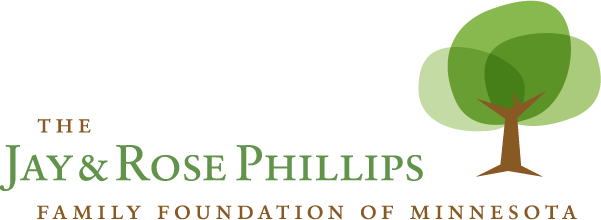By Joel Luedtke, Senior Program Officer
Some of you know that the Foundation is in the process of substantially shifting its funding priorities. On one level, this is not particularly novel in the world of philanthropy – funders’ changeable ways are carefully studied and often lamented by grant-seekers. But the way we are doing this “reimagining” is strikingly different for us and, we think, quite unusual in our sector. We’re still in the midst of this process, but it has already had a profound impact on how we approach our work.
Our foundation has decided to identify and shape our future work through the use of “human-centered design” or ”design thinking”. It is not a new discipline; the business sector has used design thinking methods since the 1960’s to create products and services that customers love to use. Think everything from food items to iPhones and Airbnb’s user interface. The central tenets of design thinking are:
- developing deep empathy with target customers through immersion and careful observation;
- developing simple prototypes of products or services;
- quickly testing and refining these prototypes;
- and, embracing failure as part of the learning needed to ultimately produce exceptional outcomes.
This process may work if you want to create a better product, but can it produce better philanthropy? We believe it will and this graphic helps explain why.
We adapted the IDEO model by placing our quest for greater impact at the center and then by pursuing design questions that resulted in innovative, tangible and actionable strategies that meet needs that were identified by and with the community. They also resulted in strategies that are implementable and that align with our philanthropic goals and values.
Typically, foundations and other funders have focused their attention on the circles labeled “What’s Feasible” and “What’s Viable” in this diagram. Feasibility encompasses vital concerns like “Can it be done?” and “Will it work?” Funders’ attention is often heavily focused on these issues as we look to replicate proven models and support best practices. We ask “What evidence do you have?”, “What does the research say?”, “How are you ensuring fidelity to the model”, and so on. Feasibility is our sweet spot.
When funders are not obsessing over feasibility, we’re pressing for assurances of viability. Often, this centers on the financial sustainability of programs and organizations, but it also encompasses the ability of people to continue to do work in new ways given their other competing demands, and the ability of systems to incorporate new norms or rules over time. Few questions annoy grantseekers more than the demand for a “sustainability plan.” And, even though all sides will admit to the speculative nature of the answers given, this question is almost always asked.
Rather than beginning in the fairly rational realms of feasibility and viability, Phillips – true to the design thinking process – has embraced the messier and more thrilling question of “What’s Desirable” as our jumping-in place. In our case, the focus of our exploration is North Minneapolis, a quadrant of the city with great diversity, assets, aspirations and challenges. We’ve also predetermined that we are seeking ways to support K-12 education and community financial power in this geography.
With these broad parameters set, we began to interview students, parents, business owners and many other neighborhood stakeholders who might benefit from our future funding. More than that, the foundation’s staff and trustees spent focused time on the Northside visiting schools and businesses in order to develop a deeper sense of this place.
We then brought together groups of co-designers – people with a range of expertise and opinions about our two focus areas – to help us develop prototype concepts that respond to the desires of the community residents that we interviewed. At present, these prototypes range from amazing strokes of genius to vague but promising aspirations, and are not ready to be funded. Over the next few months we will reconnect with our co-designers and with community members to further refine these ideas.
This is when we will begin to assess feasibility and viability. Some prototypes won’t move forward because they aren’t strong enough across all three design considerations. For example, students expressed a desire to shape their educational experience in order to make it more relevant to their lives and aspirations. There are many ways to explore this opportunity, but some will certainly crash against the myriad of policies, standards and strategies that define how schools operate. Likewise, some of the ideas we heard about building financial power in North Minneapolis will be financially impossible for us to champion with our limited resources. Despite these challenges, we are excited about many of the prototype ideas generated so far and look forward to funding their initial testing.
We began this work in earnest six months ago and still have months of work ahead of us before new long-term funding strategies emerge. Perhaps a more traditional process would have yielded well-researched and timely funding strategies by now. But, we can now ask ourselves, would these solutions have been the ones Northsiders actually wanted? Since we would have never consulted with these stakeholders in a traditional process, it’s likely that our ideas would not have resonated with them.
By taking more time at the outset to listen, observe and co-create a set of possible strategies, this process has helped us build the empathy, knowledge and relationships needed to deliver on our goal of supporting bold positive change in North Minneapolis

